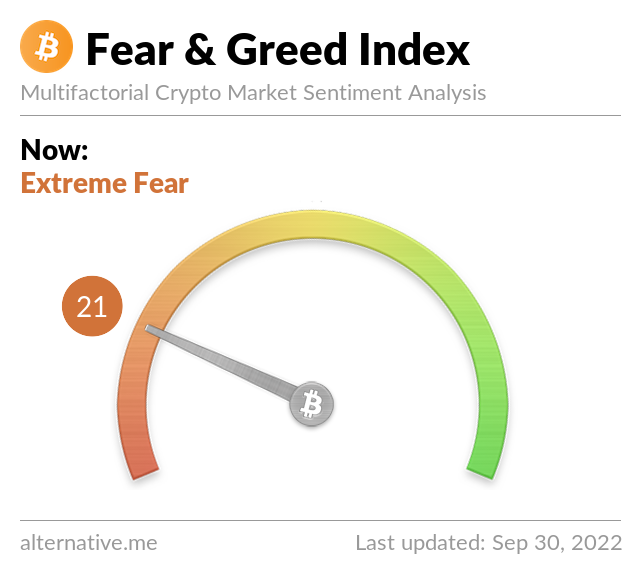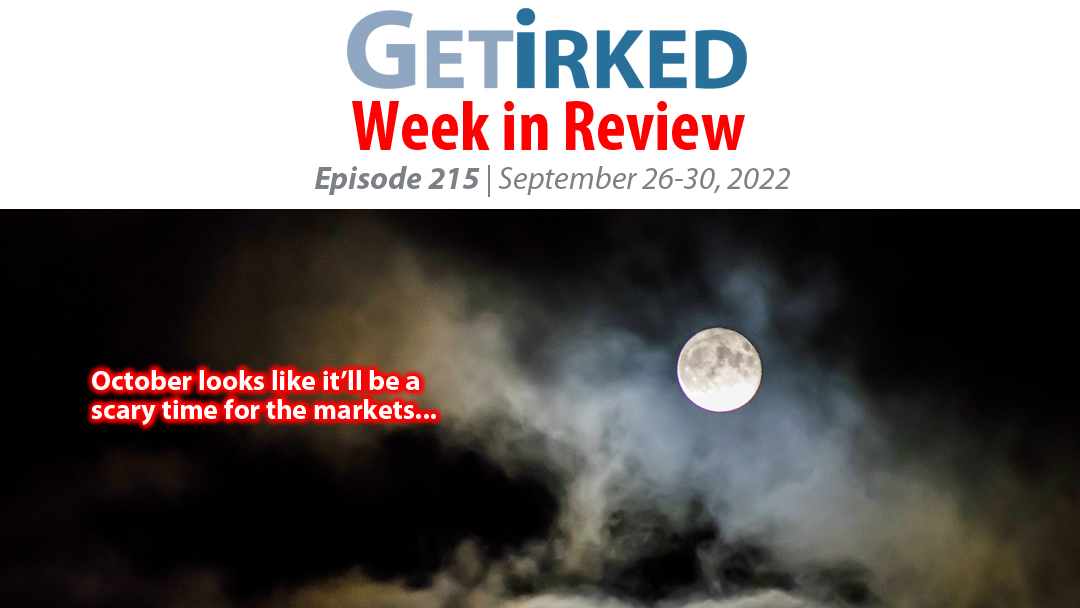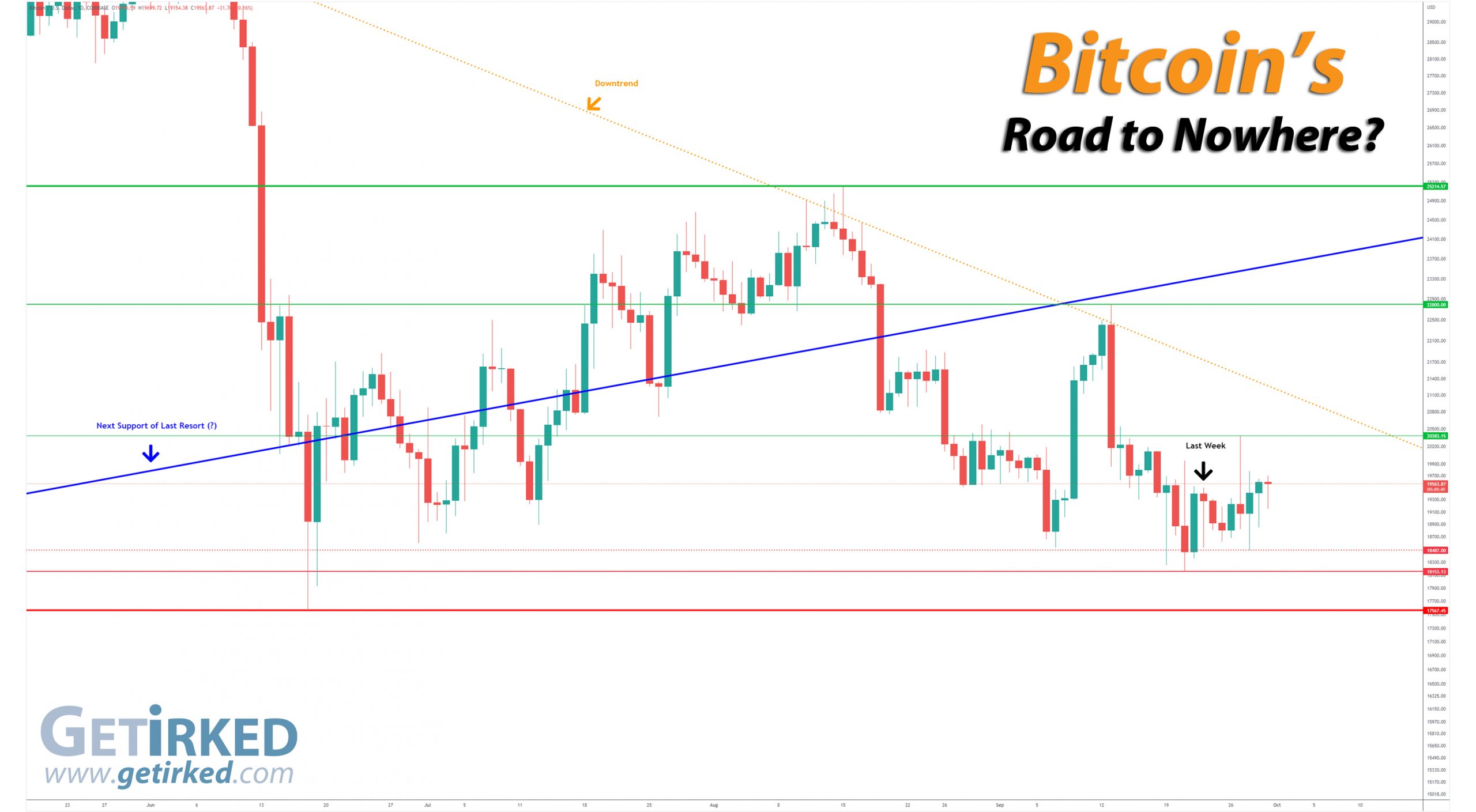Summing Up The Week
The seasonal volatility continued this week with markets whipsawing up and down on any news story, good or bad. Between the ongoing Russian invasion of Ukraine, crazy economic policies by a newbie government in Britain, and mixed inflation data both domestically and globally, there are a lot of catalysts moving the markets around.
Let’s take a look at the news that moved the markets this week…
Market News
Housing Market continues to cool at record rate
On Tuesday, the S&P Case-Shiller Index showed that housing prices cooled at the fastest rate in history throughout July, reported CNBC. However, much to the dismay of new homebuyers, in this market, that simply means prices rose slower than in prior years.
The 10-City composite, which includes larger cities like New York and Boston, climbed 14.9% year-over-year versus its 17.4% gain in June. The 20-City composite which adds Seattle and Detroit, gained 16.1%, down from 18.7% in June.
“July’s report reflects a forceful deceleration,” wrote Craig J. Lazzara, managing director at S&P DJI in a release, noting the difference in the annual gains in June and July. The 2.3 percentage point “difference between those two monthly rates of gain is the largest deceleration in the history of the index.”
Bank of England eases to prevent bond market crisis
On Wednesday, the Bank of England had to suspend its gilt-selling (e.g. bonds) program and switch to buying gilts to stem an historic bond market sell-off, reported CNBC. The move came after Britain’s new government led by Liz Truss announced they would be cutting taxes and increasing spending in an attempt to reduce the impact of inflation on Britain’s citizens.
The many causes of inflation may be complicated, but fighting inflation does not take a degree in rocket science – governments must cut spending and raise interest rates to prevent currencies from losing their spending power. Truss and Co decided that doing the opposite would be the right approach.
As you might expect, the bond market, which discounts future issues, saw these new government programs and freaked out, selling off in such ferocity unlike anything seen in the history of Britain’s bond market. As a result, the Bank of England (the U.K.’s version of the U.S.’s Federal Reserve) had to reverse course on its fight against inflation, and, instead, actually ease financial conditions to prevent a collapse of the British Pound on par with the worst catastrophes akin to the Great Financial Crisis in 2008.
The BoE’s flip-flop caused markets to rally in hopes that the Federal Reserve may execute a similar pivot in the U.S., despite the fact many, if not most, analysts and pundits believe the Fed will continue to fight inflation no matter the pain it may cause, economically.
Fed’s favorite gauge shows inflation not stopping at all…
On Friday, the Personal Consumption Expenditures (PCE) Index, the Fed’s favorite gauge of inflation, showed core inflation accelerated in August, reported CNBC. Core inflation rose 4.9% from a year ago and 0.6% month-over-month, faster than the 0.5% expected by Dow Jones economists.
The market actually rose slightly after the report, likely a result of a relief rally from oversold conditions earlier in the tumultuous week and not from sentiment seeing the report as positive, as it certainly was anything but positive.
Fed Chair Lael Brainard in a speech Friday morning cautioned against pulling back “prematurely,” saying rates will remain higher “for some time” until inflation is brought under control.
Next Week’s Gameplan
Given the volatility we’re likely to continue to see from now through the midterm elections in November, at least, I felt it might be worthwhile to revisit the importance of using Limit Orders instead of Market Orders.
What is the difference between a Limit order and a Market order?
When an investor uses a Market Order, they simply tell their broker how many shares of a stock they’d like to buy or sell, and the broker goes out and executes the order at that very moment, regardless of the price. While this often simply means the order will fill at the listed current price, in periods of extreme volatility (like what we’re seeing currently), an erratic asset can cause an investor to get a very bad price just due to bad timing and the potential of High-Frequency Trading (HFT) moving a stock price around dramatically.
When using a Limit Order, the investor sets the minimum price they would like to receive, whether buying or selling. The broker will only fill the order if they can get the requested price or a better price than requested (a higher-than-requested price when selling or a lower-than-requested price when buying).
By using Limit Orders, investors ensure they receive the price they expect or better, and it means those of us who work full time can make our trading plans and plug our orders in advance knowing they will execute as we designed without worry that market volatility could potentially give us terrible pricing.
With that, I wish you all a great weekend and I’ll see you back here next Friday!
This Week in Play
Stay tuned for this week’s episodes of my two portfolios Investments in Play and Speculation in Play coming online later this weekend!
Crytpo Corner
Important Disclaimer
Get Irked contributors are not professional advisers. Discussions of positions should not be taken as recommendations to buy or sell. All investments carry risk and all readers must accept their own risks. Get Irked recommends anyone interested in investing or trading any asset class consult with a professional investment adviser to determine if an investment idea is suitable to them and their investment goals.
Bitcoin Price (in USD)
%
Weekly Change
Bitcoin Price Action
Bitcoin’s Wild Ride
The volatility of in stocks and bonds flowed directly into cryptocurrency this week as the changes in the U.S. dollar and other country’s currencies caused Bitcoin to whipsaw both up and down. On Tuesday, Bitcoin set a new weekly high at $20,383.15 before pulling back ferociously to set a low on Thursday at $18,487.00, a -9.30% move from high-to-low made in a number of hours.
From here, the next big move for the crypto markets will come when Bitcoin either breaks through $20,383.15 on the upside or $18,487.00 (or more likely the monthly low of $18.,153.13) on the downside.
The Bullish Case
Bulls continue to grasp at any positive news stories in the space in the effort to find a hope for further upside. Whether Bulls talk about the introduction of new protocols or financial markets accepting different crypto, these bullish analysts continue to ignore factual bearish price action in favor of exciting “hopium” (a play on “hope” and “opium”).
The Bearish Case
The Bear Case remains the same as it has been for weeks now – the economic concerns combined with geopolitical uncertainties make risk assets a bad place to be and Bitcoin remains directly correlated with risk assets. Accordingly the Bears predict further downside with the majority believing the 2022 low will break before all is said and done.
Bitcoin Trade Update
Current Allocation: 16.282% (Unchanged since last update)
Current Per-Coin Price: $23,556.39 (Unchanged since last update)
Current Profit/Loss Status: -16.949% (+3.74% since last update)
Not much happened this week as Bitcoin fluctuated around the $18,500-$20,000 mark once more.
Many of the analysts I truly trust like Carter Worth of WorthCharting.com believe that Bitcoin is “fated” to break down from its 2022 lows to the $13K-$15K range in short order. Additionally, given the similarities between 2022 and 2018, I am betting on further downside so any buys I make around these levels will be with notably tiny quantities.
Bitcoin Buying Targets
Using Moving Averages and supporting trend-lines as guides, here is my plan for my next ten (10) buying quantities and prices:
0.142% @ $18,347
0.142% @ $17,926
0.142% @ $17,630
0.142% @ $17,464
0.142% @ $17,071
0.283% @ $16,670
0.566% @ $15,953
0.708% @ $15,408
0.991% @ $14,566
1.416% @ $14,076
No price target is unrealistic in the cryptocurrency space – Bullish or Bearish.
While traditional stock market investors and traders may think the price targets in the cryptocurrency space are outlandish due to the incredible spread (possible moves include drops of -90% or more and gains of +1000% or more), Bitcoin has demonstrated that, more than any speculative asset, its price is capable of doing anything.
Here are some of Bitcoin’s price movements over the past couple of years:
- In 2017, Bitcoin rose +2,707% from its January low of $734.64 to make an all-time high of $19,891.99 in December.
- Then, Bitcoin crashed nearly -85% from its high to a December 2018 low of $3128.89.
- In the first half of 2019, Bitcoin rallied +343% to $13,868.44.
- In December 2019, Bitcoin crashed -54% to a low of $6430.00 in December 2019.
- In February 2020, Bitcoin rallied +64% to $10,522.51.
- In March 2020, Bitcoin crashed nearly -63% to a low of $3858.00, mostly in 24 hours.
- Then, Bitcoin rallied +988% to a new all-time high of $41,986.37 in January 2021.
- Later in January, Bitcoin dropped -32% to a low of $28,732.00.
- In February 2021, Bitcoin rallied +103% to a new all-time high of $58,367.00.
- Later in February, Bitcoin dropped -26% to a low of $43,016.00.
- In April 2021, Bitcoin rallied +51% to a new all-time high of $64,896.75.
- In June 2021, Bitcoin crashed -56% to a low of $28,800.00.
- In November 2021, Bitcoin rallied +140% to a new all-time high of $69,000.00.
- In June 2022, Bitcoin crashed -75% to a low of $17,567.45.
- In August 2022, Bitcoin rallied +44% to a high of $25,214.57.
- In September 2022, Bitcoin dropped -28% to a low of $18,153.13.
Where will Bitcoin go from here? Truly, anything is possible…
What if Bitcoin’s headed to zero?
The only reason I speculate in the cryptocurrency space is I truly believe Bitcoin isn’t headed to zero. I am prepared for that possibility, however, by knowing I could potentially lose all of the capital I’ve allocated to this speculative investment. Professional advisers recommend speculating with no more than 5% of an investor’s overall assets. Personally, I’ve allocated less than that to speculating in crypto. I feel that anyone who doesn’t fully believe in the long-term viability of cryptocurrency would be better served not speculating in the space. On a good day, this asset class isn’t suitable for those with weak stomachs. On volatile days, the sector can induce nausea in the most iron-willed speculator. If a speculator isn’t confident in the space, the moves will cause mistakes to be made.


